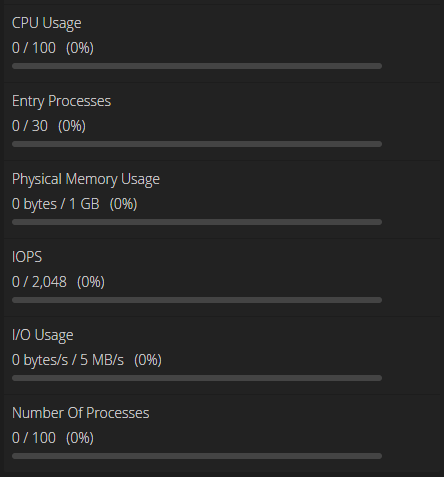
An "Entry Process" is how many PHP scripts you have running at a single time. Our shared hosting has a limit of 30 PHP scripts at a single time.
Keep in mind an "Entry Process" only takes roughly a second to complete, therefore most people get it confused with how many visitors they can have on their website. A 30 limit Entry Process doesn't mean only 30 people can be on your website at once because the likelihood of all the people hitting your website at the exact same second would likely never happen.
We've seen an entry limit of 30 usually handle 105-140 visitors on your website at a time. If you have a low traffic website but are constantly at 30 Entry Processes, it means something is probably wrong with your php scripts and they are hanging around longer then they should. An entry process can also be caused by old and outdated wordpress items, such as plugins and even themes.
For example, say you have a web pages on your website which takes 0.1s to load. 10 different people could load that web page every second. Provided the next visitor to your site only asked for that webpage after the previous visitor had finished, you would only ever need 1 entry process to serve up that page to all 10 visitors. However if all 10 visitors ask for the webpage at precisely the same instant, all 10 visitors would be served the page 0.1 seconds after that, but you would have had 10 entry processes running during that 0.1s period.
Cron jobs, shell scripts and other commands also use one entry process for the duration of the time they are running.
Simultaneous users browsing your website uses server resources. Entry processes are therefore one of the resources we have to limit, in order to protect other users of a server from any one user's excess.
If you are using all of your allotted entry processes, and another visitor tries to browse your website before the entry process count drops back below the limit, that next visitor would experience a 503 error. Because breaching entry process limits results in errors, not just slowed down service, we've been very careful to make sure these limits are set amply high enough for normal use.
It is worth understanding one more thing. 90% of the time when shared hosting accounts hit their resource limits, it is because a bot (a computer programme, rather than an individual browsing your site) has been pounding your site far too many times per second. This can be because someone is trying to break into your site by maliciously trying every password in the book. It can be because someone has written an irresponsible spider that is crawling your site, without any of the responsible spacing that good crawlers (like Googlebot) use.
If your site becomes temporarily unavailable because it is abused in this way, that is actually a good thing. It slows down potential attacks. It stops other users experiencing slowness on the server. There is no need for you (or we) to pay for additional server resources because of attacks like this. Let the attack pass, and everything will go back to normal.
Indeed, we set the limits after very carefully monitoring the server. We picked limits for each resource so that normal use will never see those limits hit.
The other thing to say is that, often, a better designed website would see you use much less. Are the caching options for your CMS turned on? Are you aggregating your CSS files? Are you using badly coded plugins / modules that thrash the server?

